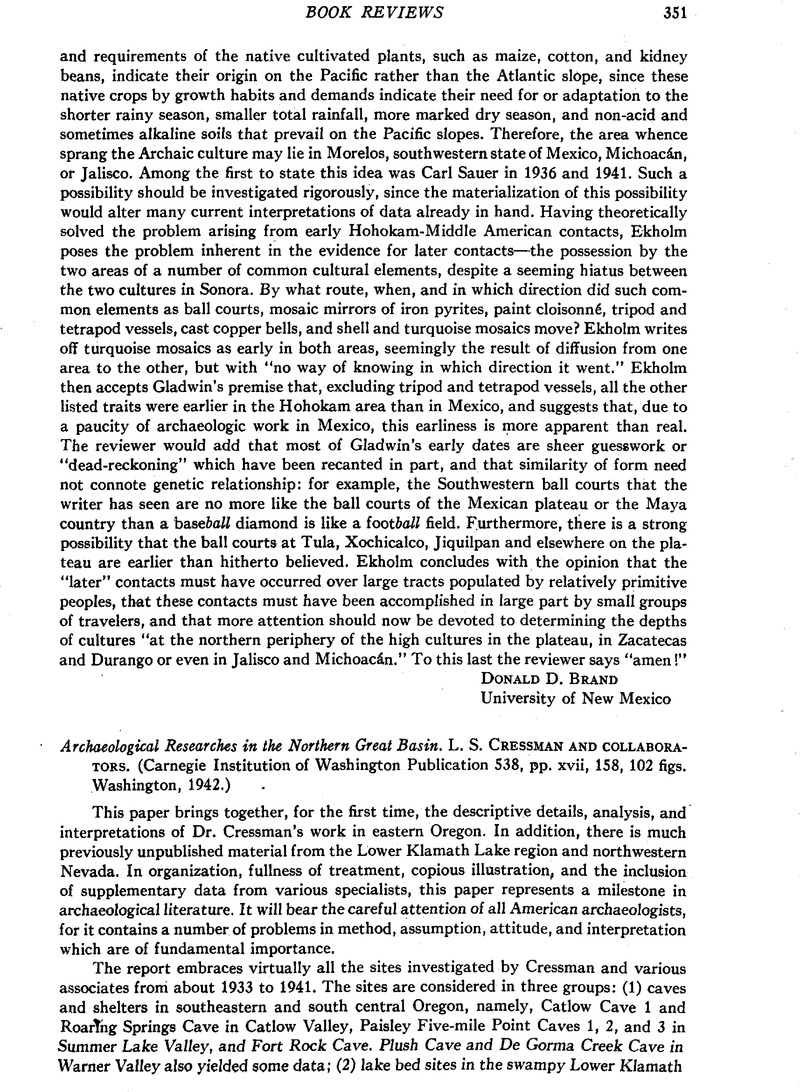Published online by Cambridge University Press: 25 January 2017

1 Cressman, L. S., Williams, Howel, Krieger, Alex D. Early Man in Oregon. University of Oregon Monographs, Studies in Anthropology No. 3, Eugene, 1940 Google Scholar.
2 Cressman, L. S., “Results ot Recent Archaeological Research in the Northern Great Basin of South Central Oregon,” in Recent Advances in American Archaeology. Proceedings of the American Philosophical Society, Vol. 86, pp. 236–246, Feb. 1943.Google Scholar
3 Cressman, Williams, Krieger, op. cit. , esp. pp. 31–34.
4 In Essays in Historical Anthropology of North America. Smithsonian Miscellaneous Collections, vol., 100, 1940. See fig. 30 and pp. 461–462.
5 In Quaternary Climates. Carnegie Institution of Washington Publication 352, 1925.
6 Anthropological Records, Vol. 2, pp. 127–49,1939, and Vol. 4, pp. 361–446,1941. (University of California Press); American Anthropologist, Vol. 40, pp. 405–407, 1938.
7 Cressman, Williams, Krieger op.cit.
8 Williams, Howel The Geology of Crater Lake National Forest, Oregon. Carnegie Institution of Washington Publication 540, 1942.Google Scholar
9 Following the formation of the great crater of Vesuvius in 1906, a new cone thrust up from the crater floor in 1913. During the seven-year interval the mountain was almost completely quiet. Perret, Frank A. The Vesuvius Eruption of 1906, Study of a Volcanic Cycle. Carnegie Institution Publication 339, 1924 Google Scholar.
10 The six arbitrary levels carried in one section of Lovelock Cave by Harrington in 1924 represent only a fraction of the deposit and are not wholly reliable for checking trait presences. They do give a rough idea of what was found in upper, middle, and lower levels, but the numerous cave “lots” of Loud in 1912 can be used to supplement the “stratigraphic” record.
11 Kelly, Isabel Ethnography of the Surprise Valley Paiute. University of California Publications in American Archaeology and Ethnology, Vol. 31, pp. 67–210, 1932; see pp. 120, 122.Google Scholar
12 Steward op. cit.